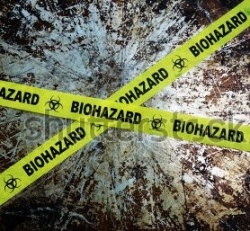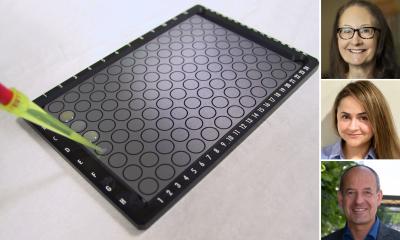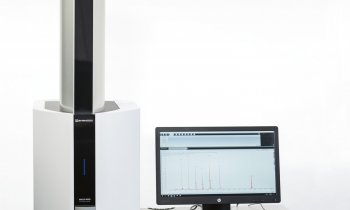French bio-terrorism network of labs
Born in the USA out of the anthrax scare that followed the 9/11 attacks, the formation of a network of laboratories kept on 24/7 alert against potential bio-terrorism was introduced in France at the end of 2001.

Initially interested only in the search for Bacillus anthracis, (the causative agent of anthrax) the structure was enlarged in 2004 with the mission to carry out the analysis of all chemical and biological agents that could present a terrorist threat.
Under the jurisdiction of the Interior Minister for National Defence and Safety a network of laboratories known as Biotox-Piratox has evolved, within the context of the national security plan ‘Vigipirate’.
Since 2011, the network has extended its missions to include the discovery of all substances of suspect nature in the environment, in drinking water, and/or the food chain, that could have been placed by a deliberate malevolent act, or by negligence. The aim of the network is to act efficiently and promptly in collaboration with the health services, police and army to eliminate the threat and protect the general public.
President of the Network’s Scientific Board and Security Defence Advisor for INSERM, Dr Patrice Binder will present the work of the network at the Journées Internationales de Biologie (JIB) in Paris at the beginning of November. Dr Binder spoke to European Hospital’s correspondent to explain more about the role of Biotox-Piratox in France and his forthcoming talk at JIB.
Why was Biotox-Piratox chosen as a subject for JIB?
Dr Binder: In fact it was we who approached JIB. We felt that it was important to advertise the network’s existence to the general public at large and in particular to other laboratory professionals because they are often in the frontline if there is a potentially dangerous situation. We want to inform them of the network’s existence and also let them know where they can turn if confronted with an unexpected situation. The network is in fact four networks – one that can deal with packages, envelopes and other substances that could be dangerous; another that can ensure the analysis of drinking water on a round-the-clock basis; a third that can act to take environmental samples in a situation of actual, or suspected, chemical attack and, finally, the national network of reference laboratories that are not mobilised immediately but are there to confirm the identity of a suspected pathogen.
Does Biotox-Piratox recruit new laboratories to the network?
‘Not at all; the network has been set up to work in a way that is optimal when confronted with a potential biological or chemical risk to public health. The network is organised over three levels. Level one is known as our ‘sentinel laboratories’. These countrywide laboratories must be able to recognise a suspicious situation, package or sample, alert the authorities, and recognise which of the 100 or so, level 2 laboratories is best adapted to deal with the situation.
‘Each geographical defence-zone in France has at least one reference laboratory for ‘human health’ and another reference laboratory for chemo-toxicological analysis of the environment. These include 10 water board and 10 military labs. All the level two laboratories were selected from the results of an inquiry carried out by the scientific board in 2005. In addition to their scientific excellence, their specialty, geographical localisation, equipment and ability to maintain a permanent 24-hour cover, were all taken into consideration.
‘For the most part the human-health labs are connected to a public hospital in each zone. While the toxicology environmental labs belong to different bodies including amongst others the police, gendarmerie and the national agency for food safety. A full list of level two laboratories is available from the Biotox-Piratox council.
‘The level three laboratories are not necessarily mobilised as soon as the level two labs, as they are the highly specialised members of the network. Their role is to confirm the nature of a suspected pathogen and therefore have to be able to carry out rapid identification techniques such as rt-PCR under security conditions of at least category three. They also must have trained personnel for dealing with the treatment and containment of a potential infection of the pathogen.
‘Responsibility for communication with the public for allaying fears and ad hoc communication rests with the governmental services.
Has the network ever been tested?
‘Looking at the archives, since its existence in 2003 the network has dealt with 1,300 alerts. In 2003, 207 separate incidences were recorded, but since 2010 this has reduced to a steady 150 a year. Due in part to better understanding of what we are looking at and the organisation of the network, the number of analyses for suspected agents for bio-terrorism has fallen from 77.8% to fewer than 2% in 2011.
Do similar networks exist in other countries?
‘Many of our European neighbours have similar plans in place and we try to have joint seminars and training programmes with other countries to exchange information and improve techniques. One of the differences in the French system is that we have created a network within networks associating laboratories from different specialties and environments together, to form a multidisciplinary and multifunctional network that can, thanks to its integration and shared training, work optimally together in the face of underlying terrorist threat to maintain national security.
19.11.2013











